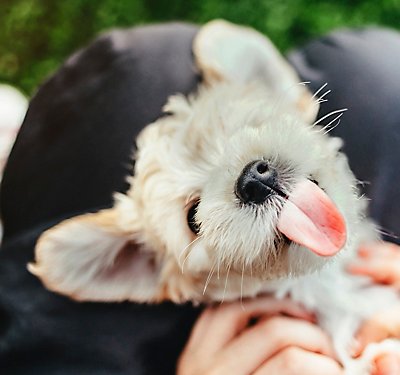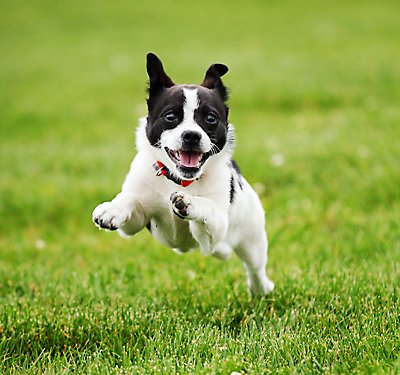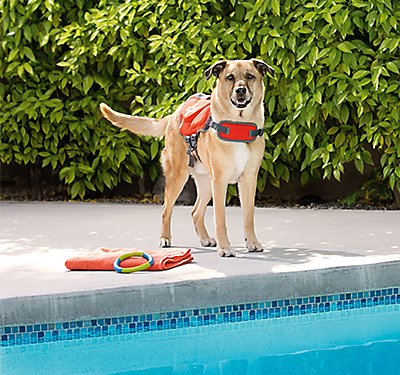
 top
top
DOG / health & care
Beat the Heat: How to Protect Your Dog’s Paws From Hot Pavement
Overview
Summer is the best! You and your pup can go outside, explore, play, walk and go on so many different kinds of adventures. With the summer fun, however, comes the summer heat. Depending on where you live, summers can get extremely hot. People tend to take some extra precautions during this kind of weather, where the sun’s shining and warming everything up. They put on sunscreen to protect their skin, wear sunglasses to protect their eyes, drink extra water to stay hydrated, and migrate toward the shade to cool off.
Just like we take those extra steps to protect ourselves, pet parents may find that they need to take extra precautions to protect their four-legged friends, as well. The heat can create conditions that are more dangerous to our pups. One of the biggest and most common injuries that pups get during the summer is a burned paw. Your dog’s paws have footpads that can usually handle whatever a stroll or walk in nature throws at them. But a lot of human-made surfaces can burn your pooch’s paws, including concrete, metal, pavement, sidewalks and asphalt.
Why Are These Surfaces So Dangerous?
These surfaces naturally absorb heat. Surfaces like asphalt tend to be dark in color and draw in heat, often making them much hotter than the climate itself. On an 80°F (26°C) day, the pavement can reach temperatures as high as 125°F (51°C). As you can imagine, this can quickly become a danger to your puppy's paws.
How Do I Know if My Dog Has Burned Paws?
If you’re just finding out about these dangers or if your pup has spent too much time on hot pavement, here are some signs their paws could be burned:
- Limping or avoiding walking
- Licking or chewing their feet
- Paw pads are darker in color than usual
- Pads are visibly damaged
- Blisters or redness
If your pup is showing any signs of hurt, damaged or burned paws, take them to the vet immediately. Burns can easily become infected and your vet is the best person to make sure your pup is ok. If you’re unsure whether or not your pup might have injured paw pads, still consult with your veterinarian just in case.
How Do I Protect My Pet’s Paw From the Heat?
- Dog Booties - While they might sound silly, dog booties are an effective and stylish way to protect your puppy's feet from hot man-made surfaces. Dog booties are designed to create a barrier between your dog’s paw pad and the pavement beneath them. While they might not like them at first, if you slowly introduce them there is a good chance your pet will get used to them over time.
- Avoid the Hottest Parts of the Day - If your pup isn’t a fan of high fashion boots for their furry feet, then there are still some other options. As the day passes, the pavement gets hotter and hotter. The longer the sun is out, the longer the surface absorbs the heat. That's why the best time to walk your dog during warmer times of the year is first thing in the morning. The ground has had the entire night to cool back down and become safer for those paw pads.
- Stay in the Grass - If your pup is used to daytime walks and it’s a part of their routine, don’t worry because there is always the grass. These natural surfaces are what their paw pads were made for. While the grass may still be warmer than normal, it gets nowhere near as hot as the pavement and is usually a safe area for them to explore with their harness and leash.
- Prepare Ahead of Time - If you know your area gets particularly hot during the summer months, prepare ahead of time. Acquire all of the dog supplies you need to protect your pup in the heat.
Things to Avoid:
- Paw Balms - Paw balms are a great tool for protecting your puppy's paws during the winter months. So, many pet parents assume they’re also helpful during the summer. In reality, those balms melt under the heat of the pavement and do not offer any protection when it’s hot. Make sure to use one over the winter as they’re great for protecting dogs from winter salt, ice, and snow.
- Walking in the Heat of the Day - Do not walk in the hottest parts of the day. The pavement is at its hottest around dinner time, when it has had the entire day to absorb heat. Try to avoid it altogether after the late morning. If your dog needs exercise, try walking in the grass or playing with dog toys inside at home.
The most important thing to remember is that your pup needs protection from the sun and heat just like you do.
Information in this article isn't intended to diagnose, treat or cure your pet and isn't a substitute for veterinary care provided by a licensed veterinarian. For any medical or health-related advice concerning the care and treatment of your pet, contact your veterinarian.


























